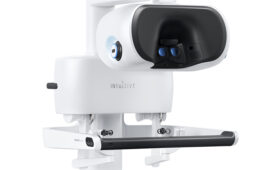Vicki Anastasi, global head of medical device and diagnostic research, ICON plc
 Clinical registries are becoming valuable resources for medical device manufacturers. These clinical registries can be used in a few ways: building pre-approval documentation, and in post-approval monitoring. Using registries effectively will save both time and money for medtech companies. But companies need to better understand how to find them, how to use them, and how to get the most out of them.
Clinical registries are becoming valuable resources for medical device manufacturers. These clinical registries can be used in a few ways: building pre-approval documentation, and in post-approval monitoring. Using registries effectively will save both time and money for medtech companies. But companies need to better understand how to find them, how to use them, and how to get the most out of them.
How to tap into clinical registries
Key opinion leaders (KOLs) and medical advisory staff are critical to collecting existing clinical data and generating postmarket data. They should be knowledgeable and up-to-date on what registries exist and how medtech manufacturers might harness them. These clinical registries are used primarily by surgeons and doctors. Companies need to ensure that KOLs are savvy to determine what registries are available, the information required from the registry, the information that is being collected, and whether those data would advance the product. These are driven by the medical community, and device makers don’t necessarily know what is out there. Clinical registries are a big category. There are a lot of out there and there is a lot of data available, but it may not always be the data companies need.
It could mean there’s an existing clinical registry with data available. It could be that there isn’t one and you need to own one about your product. Or it could mean that there is a therapeutic area registry that’s available, but the data being collected doesn’t work with your product.
Postmarket clinical registries
When people talk about traditional registries, they’re usually talking about a registry that’s created based on a product that’s undergoing a regulatory submission and moving, aligning, or shifting the burden of data collection from premarket into postmarket.
These are usually products that have limited claims, based on a discreet population attainable in a clinical study. These data are followed into postmarket. Once the product is on the market, that patient population can be expanded via a registry.
Device makers that build evidence for broader populations using this type of registry are generally able to save money compared with those who chose to do additional prospective studies.
In addition, they can be useful for making a case for subpopulations, such as those at higher risk or “orphans” (populations that are very small). Companies that have sued a registry to build evidence over time have a successful track record.
Therapeutic registries
Therapeutic clinical registries are not generated from a single company, rather they are a registry for a therapeutic area, such as orthopedics. These data, what I would call “real-world data” can be enormously valuable because they often contain thousands of patients that have been followed for many years. If a company is developing a product for a sector, this is one of the first places they would find to draw insight. Armed with such data, a prospective clinical study might require fewer enrollees, thereby saving money and time, as well as possibly broadening the clinical population. Using therapeutic registries is one of the most valuable ways to for companies to obtain critical market and outcomes data for new products. And these can be continued to be used postmarket to measure outcomes.
Working with existing registries
Existing clinical registries can be an immense tool for new products on the market. These can be therapeutic registries or registries that have been started for equivalent products. The important issue to keep in mind, however, is that there is a certain data set being collected and that set may or may not align with a medtech’s product needs.
Due diligence is key here. This is where KOLs can really come into play. Chief medical officers should be involved, as well as a medical advisory board. There is no reason for a company to set up their own registry if an identical one already exists.
Building your own registry
However, if there is no registry already existing that meets the needs of the product and the company’s clinical goals, you may need to consider that creating a registry is going to be part of your strategy to enter the market. Companies need to understand what that means and how they are going to support and maintain that registry. It can be expensive and time consuming, so getting it right early is critical. Some companies may want to find a partner who can build the registry and support it.
Talk to regulatory and reimbursement agencies.
Keep in mind that FDA and other agencies want companies to take advantage of these existing clinical registries. These agencies will often ask submitters whether they explored data options because they provide such a rich source of information.
No one designs a perfect clinical study. There is no such thing. FDA and CMS are saying that companies need to get smart about their industry, their therapeutic space, and provide evidence of their product. You have to incorporate many different factors.
Companies need to talk to FDA, or other regulatory bodies. They also need to talk to payers to ensure they are looking at the right data sets. CMS might request that companies collect additional data.
However, in talking with these agencies or stakeholders, it is critical to be informed about your product. You don’t want to go into a meeting with a regulator and have them say, “Why aren’t you considering using registry A, B, and C?” and you don’t know about registry A, B, and C. This is not to say regulators won’t help, but you don’t want to be behind them.
Get help.
If firms don’t have the necessary KOLs, they will need to find a partner to help. This is something that companies cannot do alone. They need to invest in making sure they have a good plan. It is critical that companies are knowledgeable about their space. They need to know where patients are coming from, what sites are involved in the registry, who is contributing, what data is being collected.
This information is part of due diligence. You should be clear on where and how a product is going to be use in the marketplace, how it affects the patient continuum of care, and the reimbursement model. Have a clear picture on the best way to collect clinical data and how to de-risk a clinical program
Clinical data is expensive but a necessary part of establishing safety and effectiveness, as well as reimbursement. It benefits companies to set up a system that can help expand claims. To do that, companies need to be smart about how money is spent.
Clinical registries are a very powerful tool. Registries using data that’s already in a registry is a powerful tool. Active data collection enables companies to move forward and perhaps establish additional claims for products once they are on the market.
[Want to stay more on top of MDO content? Subscribe to our weekly e-newsletter.]

![A photo of the Medtronic GI Genius ColonPro polyp detection system flagging a potential sign of colon cancer during a colonoscopy. [Photo courtesy of Medtronic]](https://www.medicaldesignandoutsourcing.com/wp-content/uploads/2024/04/Medtronic-GI-Genius-doctors-268x170.jpg)


